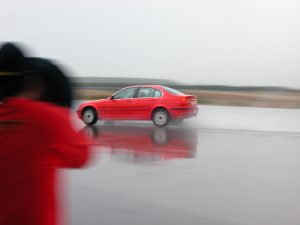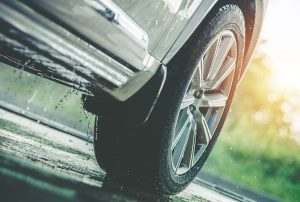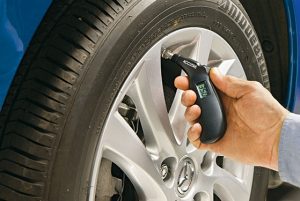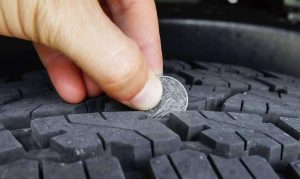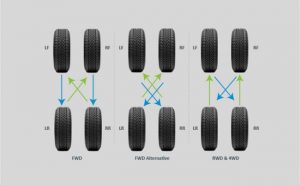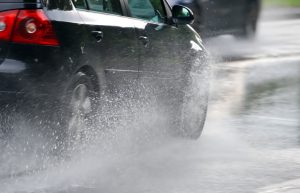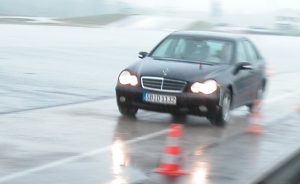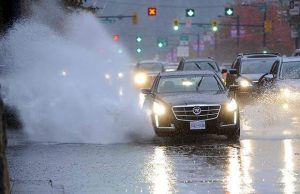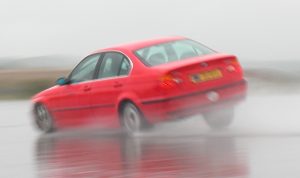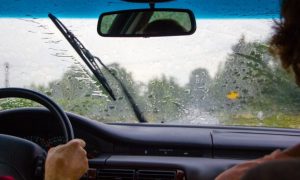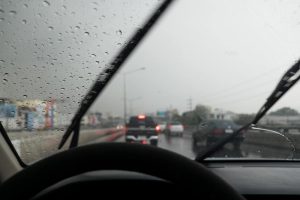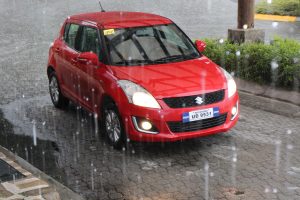The rainy season is officially upon us. The roads will be wet and slippery and the possibility of a flash flood is imminent especially during a strong and sudden torrential downpour. Motorcyclists and bicyclists will become “invisible” in the rain and most of these riders will suddenly stop under an overpass, tunnel or MRT and LRT structure to get away from the rain or wear their raincoats or ponchos. Most of them will obstruct the middle lane. Pedestrians will be donning umbrellas that will not only shield them from the rains but also give them a “blind spot” when they’re crossing, especially when they’re in a hurry to get away from the rain.
Most motorists will check and ensure their wipers work properly when the rainy season comes but others forget to check their tires. Tires are the “contact patches” of the vehicle on the road and a set of worn or balding tires on a wet and slippery road is a cocktail for disaster. So, before we remind you of the usual rainy day driving tips, we’d like you to take a closer look at your tires first before you drive your vehicle out on a rainy day.
Check the Tires First
Regardless of what experts say, the best tires for the rain are tires that are properly maintained. Rain or shine, drivers must ensure that the tires on their vehicles are working at their best by implementing a regular maintenance routine or regularly visiting their favorite tire center.
Regularly check the tires for proper inflation. The correct air pressure for your tires is specified by the vehicle manufacturer and can be found on the vehicle door edge, door post, glove box door or fuel door. It is also listed in the owner’s manual. The number listed on the side of the tire is the maximum air pressure for the tire, which is not the operating tire air pressure recommended for your vehicle. Make it a habit to check your vehicles’ tire air pressure at least once a month. It only takes five minutes and will save you money and headaches down the road, especially when driving during a cold, rainy night.
Regularly check the depth of the tire treads. Tire makers place treads on the tire contact patches for a reason. They’re not there merely for decoration but they also channel the water away so the rubber always comes in contact with the road surface. When a film of water comes between the tires and the road, hydroplaning will result and the vehicle is temporarily “floating” on water, which will wrest control away from the driver. The vehicle will either skid off the road or crash into another vehicle or a road barrier. That’s why even race cars change from slick tires, which have no treads, to “rain tires”, which have grooves, when racing in the wet. Tires should have at least 1/16 inch tread depth in order to perform the way they were designed to work. A coin should be able to stand erect when the treads are deep enough. Replace the tires when the treads are worn out. While it may be true that replacing worn-out tires are expensive, your life and those of your passengers are more precious.
Regularly rotate the tires of your vehicle. Because of the road undulations that your vehicle is exposed to every day it is being driven, the tires are subjected to phenomenal stresses. In a front wheel drive vehicle, the front tires are especially overworked because they provide the road contact for the power drive, directional changes, braking, weight distribution, and road shock absorption while the rear wheels are less stressed because they only roll, brake, and carry the weight of the lighter half of the vehicle. Thus, having your vehicle’s tires rotated at least every 10,000 kilometers will help detect any alignment or tire balance problem and prevent irregular tire wear to make sure that your tires last longer and perform better.
Driving on Wet Roads
After you’ve checked the tires and you’re ready to drive in the rain, please remember the following driving tips for wet roads:
Slow down. Exercise caution when rain follows hot, dry spells. As the rains begin to fall, water mixes with grime, engine oil and grease build-up on the road creating slick surface conditions that can cause skids. Road conditions may improve after the first rain washes away most of the grime, but you’ll need to still exercise caution when driving in the wet. The best way to avoid skidding is to slow down. Driving at a slower pace allows more of the tire’s tread to make contact with the road, which leads to better traction.
Keep a safe distance. Slick roads, wet brakes and reduced visibility can lead to collisions. Give other vehicles plenty of room and brake early with reduced force. It takes about three times longer for the brakes to stop the car on wet roads than on dry roads. Since more braking distance is required, it is utterly important not to tailgate or follow a vehicle too closely. Keep more than two car lengths between you and the vehicle in front of you.
Do not use the hazard lights or blinkers. Only stupid drivers turn on their hazard light and blinkers during a sudden strong torrential downpour because they think it increases their vehicle’s visibility to other road users. In fact, the opposite happens. The blinking lights further obscure the vision and distract or irritate the driver behind you. Turning on the hazard lights disable the directional signal lights so the other road users won’t know of your intention when you’re turning or changing lanes, which can cause a collision or an accident. If the road conditions become too dark, turn on your headlights at low beams instead and don’t use the high beams. So please, don’t be stupid. Do not use the hazard lights or blinkers in the rain unless your vehicle is stopped because of an emergency or a stall and it has become an immobile hazard or obstruction on the road.
Avoid driving on standing water splashing other road users. Not only will your vehicle hydroplane and lose traction, but splashing water can impair your vision and other drivers’ visibility. Moreover, standing water often shields potholes and debris from view and it can reduce the effectiveness of your vehicle’s brakes. Stop any delusions of imitating your favorite rally driver in the wet. Remember, rally drivers race in a controlled environment where other participants and spectators are aware of the risks while you’re driving on public roads where there are a innocent lot of lives at stake. Besides, you’re not going to win a championship or gain anything except perhaps a damaged vehicle or a night in jail.
Drive on the tracks left by the vehicle in front of you. This allows the vehicle ahead to displace any standing water that’s on the road. In case of a low flood that your vehicle can safely ford into, drive behind the waves created by the vehicle in front of you. This will similarly displace the flood into a lower level that will prevent water coming into your vehicle’s engine compartment and reduce the possibility of a stall.
Recover from a skid. Skids can happen even to the most cautious drivers. If your vehicle begins to skid, remember not to slam on the brakes and do not pump the brakes if your vehicle is equipped with an anti-lock braking system (ABS). Instead apply pressure to the brakes in a firm manner and steer the car in the direction of the skid.
Recover from hydroplaning. When water creates a barrier between the road and your vehicle’s tires, the liquid film causes the tires to lose traction and glide or “hydroplane” across the water’s surface. If this happens, do not brake or turn the wheel abruptly as this may cause your vehicle to go into a skid or spin. Take your foot off the gas and keep the wheel straight until your car reclaims traction. Brake gently if needed. If you have a manual transmission, push in the clutch and let the car slow down on its own.
Be more attentive when driving in the rain. Avoid using cruise control because it can cause your vehicle to accelerate when hydroplaning. Maximize control over your vehicle by gripping the steering wheel with both hands on the correct 9 o’clock and 3 o’clock positions. Do not use a mobile phone or anything that takes your hands off the wheel and eyes away from the road. Please do not forget that the Anti Distracted Driving Law is in effect whether rain or shine.
And finally, maximize visibility by keeping your vehicle’s glass clean. Keep your windshield wipers in tip-top shape. Summer heat can crack or harden the rubber blades on your wipers and make them ineffective in removing the rain, grime and mud from your windshield, so check or replace them before driving during a downpour. Sudden precipitation and the colder interior of your air-conditioned vehicle can cause the front windshield and back glass to fog up, so use the front and rear defrosters to maximize visibility. Avoid pointing the aircon vents towards your vehicle’s side window because condensation will form to fog them. And lastly avoid installing heavy dark window tint because these will limit the driver’s frontal and peripheral vision.
Driving in a strong downpour is inherently dangerous so if you can avoid it, please do. You can always wait it out until the skies clear or you can just stay indoors while the rains are pouring hard. Each year, thousands of car accidents are caused by wet driving conditions. Avoid becoming another statistic. Stay safe. But if you must go, drive safe and keep these safety driving tips in mind.
 Power Wheels Magazine A Notch Above
Power Wheels Magazine A Notch Above

